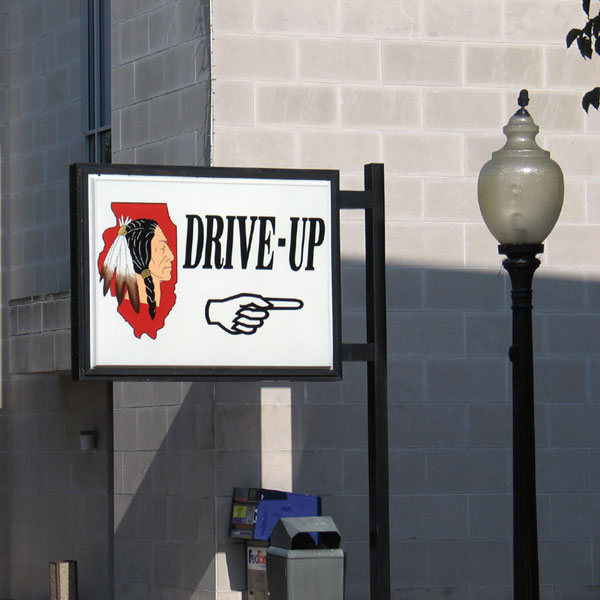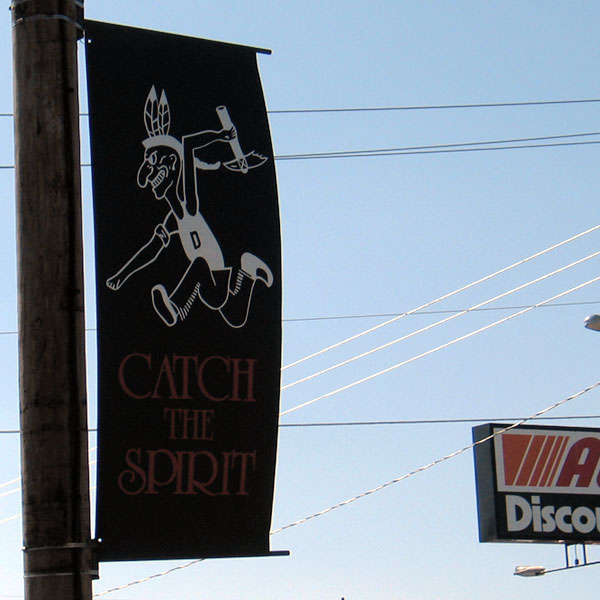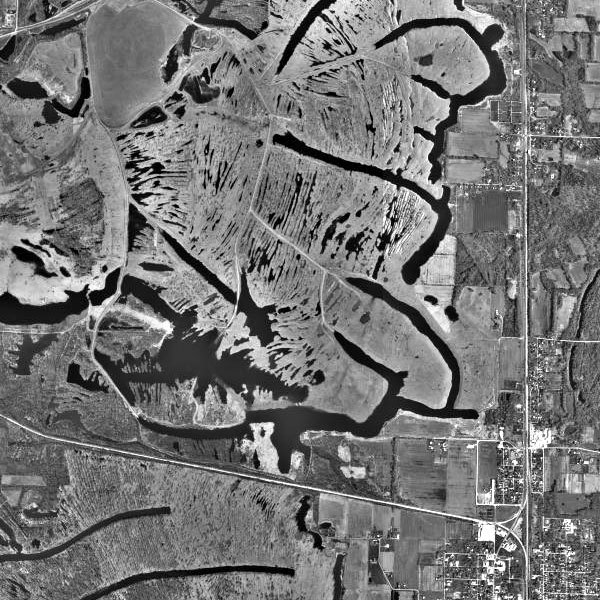
U.S. Census Bureau / Du Quoin, Illinois
TerraServer / Aerial Photo
Jean Baptiste Du Quoin (sometimes Ducoigne) was born on January 21, 1750. He was the son of a Frenchman and a Tamaroa Indian woman. He was baptized at the Church of St. Anne outside Fort de Chartres. He was made chief of the Tamaroas in 1767. This was also the year that the Illinois Confederacy made up of the Kaskaskias, the Michigans, the Peorias, the Cahokias and the Tamaroas (organized in defense against the Iroquois) desolved when Chief Pontiac was murdered in Kaskaskia by Michigan Indians. The other tribes drove the Michigans onto Starved Rock and by 1769 had starved them to death.
In 1800, Chief Du Quoin merged the Kaskaskias, Cahokias and Tamaroas into a new confederacy. Two years later, Chief Du Quoin met the Shawnees in the prairies east of the Big Muddy and nearly all were killed on both sides. Most survivers were Kaskaskias, so Chief Du Quoin is often referred to as Chief of the Kaskaskias.
Chief Jean Baptiste Du Quoin died in 1811 and was buried at Kaskaskia. His son, Louis Jefferson Du Quoin, became chief of the tribe in 1811. On the present site of Old Du Quoin, the Kaskaskias had a winter camp. They hunted and trapped along Little Muddy and the nearby creeks during the winter, and in the spring they sold their furs in Kaskaskia and spent the summer in leisure. The camp was located on the main trail from Shawneetown to Kaskaskia and it offered shelter and hospitality to travelers, since the chief was himself half white.
Jarrold Jackson stopped at the Indian Camp in 1803 and staked out property on the Little Muddy. He was the first settler of Old Du Quoin. He owned and operated the first Toll Bridge over the Little Muddy River. Old Du Quoin was never actually founded but grew gradually out of seasonal camps which Indian hunters had established. Daniel Dry opened a store in the camp in 1880. Chester A. Keyes also had a store in the town.
By early 1840 construction was begun on a railroad from the Lakes to the Gulf. It passed several miles west of Old Du Quoin. In about 1850, the settlers began moving their houses and stores to the new town by the railroad and called it "The Station." The town grew and became larger than the first settlement.
In 1853, Isaac S. Metcalf, a civil engineer from Maine, and Chester A. Keyes of Old Du Quoin laid out the new town by the railroad and called it Du Quoin. Comprising the central section of the present city, it extended from Spring to Poplar Streets, and from the railroad to Pear Street. Main and Washington Streets were laid out a hundred feet wide to provide room for shade trees and Keyes Park was laid out and donated to the city with the stipulation that no building should ever be erected on it. The town was officially dedicated on September 20, 1853, and the first lot was sold to Bargella Silkwood on September 24, 1853.
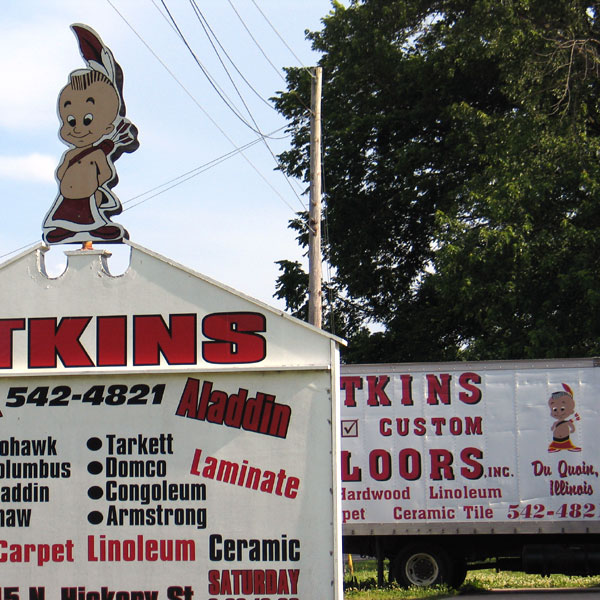
Schools Using Native American Racial Mascots in Illinois
"I caught our Indian Mascot offguard"
"Many people ignorant of Indigenous issues"
Dear Editor:
This is in regard to Mr. Russell and his ignorance of the indigenous issues throughout North America. Unfortunately, I believe that the majority of the population shares his views. First, there is absolutely no indigenous support of Indian mascots. Stereotypes such as these are extremely offensive and in no way are they an imitation, which would conclude that they are far from flattery. Mascots such as Chief Illiniwek, the Du Quoin Indians and the Atlanta Braves are only tools used in the systematic dehumanization of indigenous peoples. People who support the use of Indian mascots should then in return support the use of other cultural mascots. Why are there not teams in place such as the Nashville Niggers, St. Louis Spics and the Harrisburg Honkies? Because they would be seen as racist.
Mr. Russell points out that the use of Indian mascots is done with the hope that the team members will be as strong and courageous as the Indians were. Well then, why not once we get the Nashville Niggers up and running, put slave master mascots on the sidelines, and if the team loses we can have them beaten like the strong brave slaves of the past. Won't this boost the team morale?
As for the argument that I, as a human of a very proud indigenous heritage, am being overly sensitive about this issue, that is just another attempt at political correctness. Many of the indigenous peoples of North America have been decimated in a systematic genocide that is continuing even today. This issue goes far beyond mascots. This is 500 years of unmistakable dehumanization and stereotyping and ignorance, and is no longer a tolerable excuse.
Until the conscience of mainstream America chooses to recognize that there is a problem, issues such as the suicide rate among teens on the reservations and the continual stealing and misuse of native-owned lands by the government will continue to be swept under the rug or looked at as the continuing "Indian problem" within the United States.
Nichole Boyd
junior, university major
Daily Egyptian
11/17/05
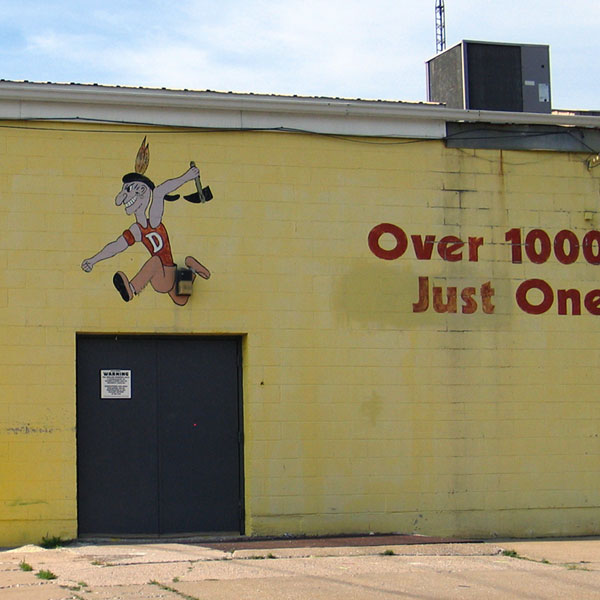
The Du Quoin State Fair is a showcase of Illinois Agriculture, which occupies 1400 beautiful acres in the South Central section of Illinois. The State Fair plays an important role in contributing to the state's economy and educating the public about the importance and necessity of agriculture.
